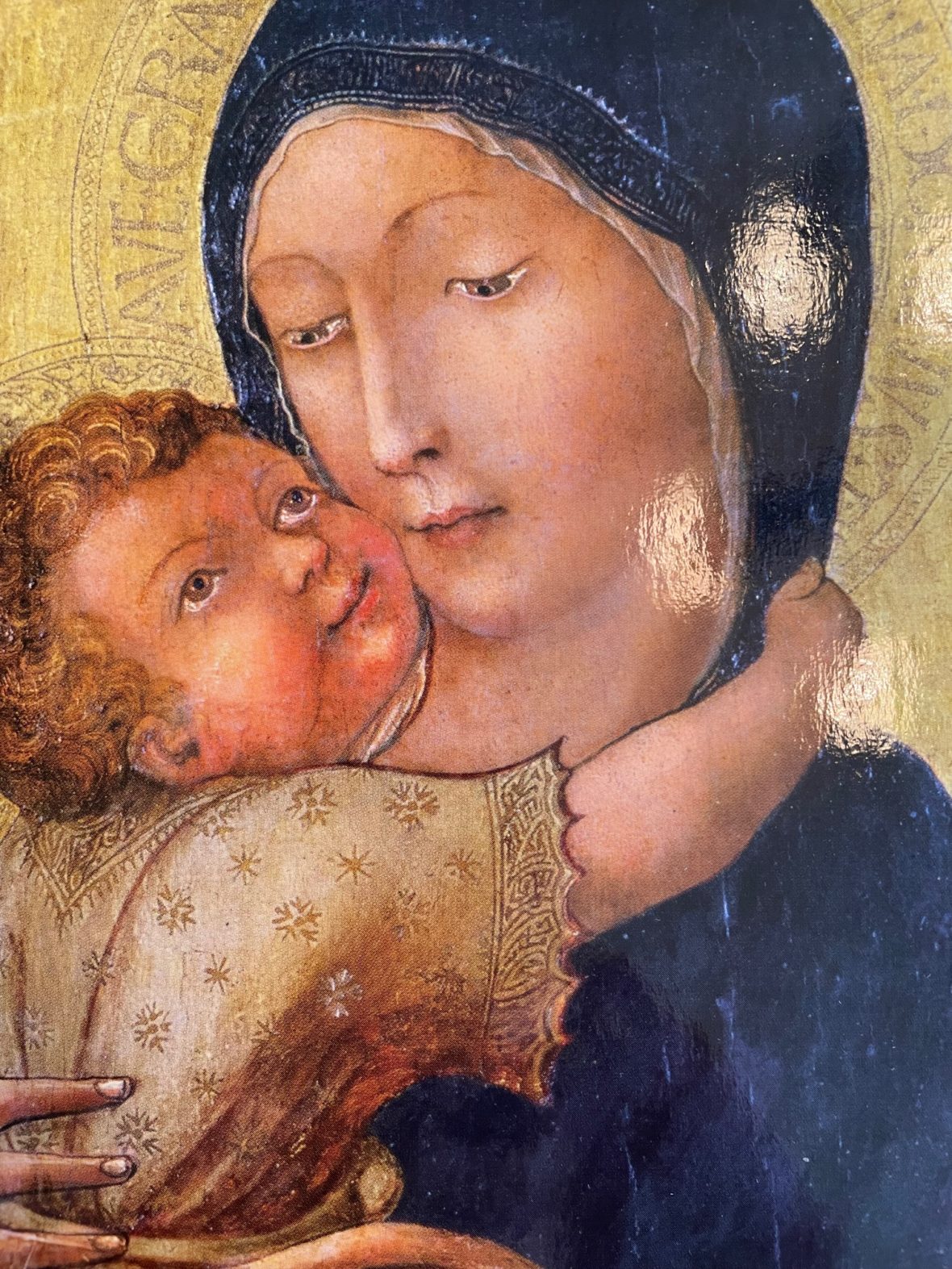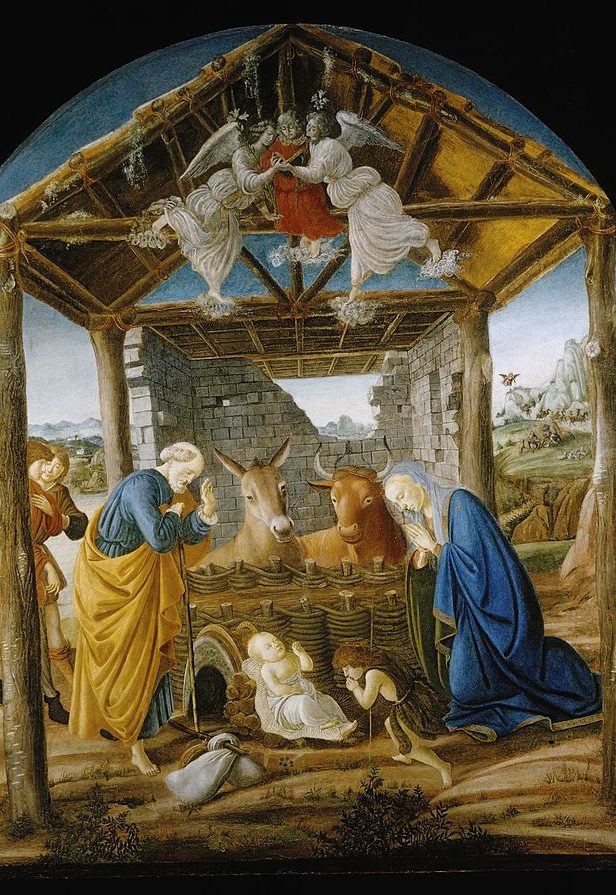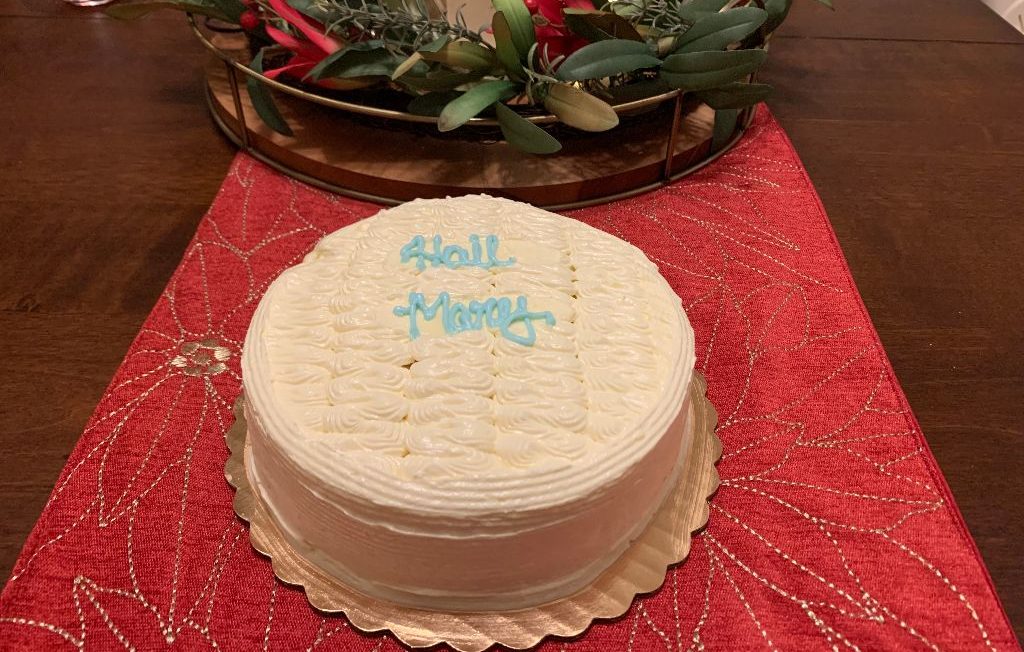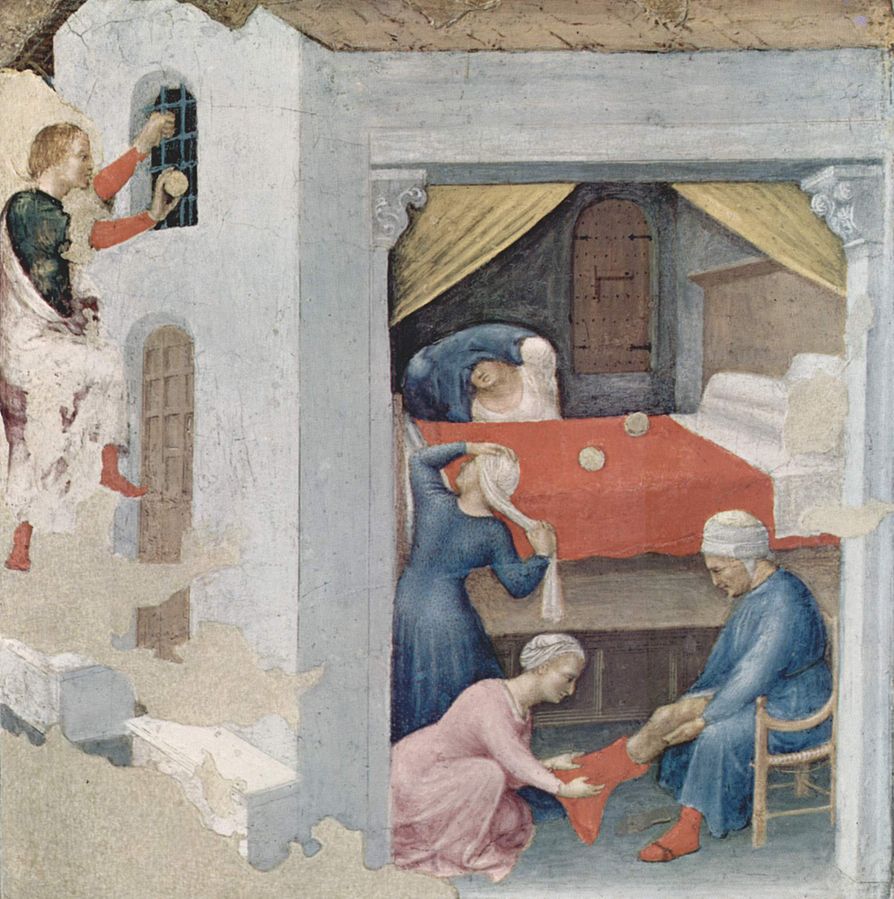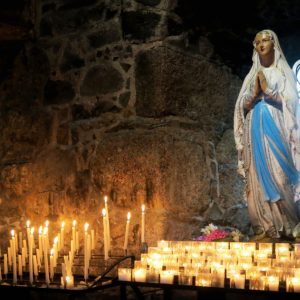“Those holy heads are too near together for the halos not to mingle and cross.” ~G.K. Chesterton As you think of the Christmas story this week, notice something very Catholic in it; specifically, the origins of our love and devotion to the Blessed Virgin Mary. Our devotion to Our Lady springs from the fact that the Son of God was conceived by the Holy Spirit in Our Lady’s womb, per her consent, and was nourished there for nine months in a life-giving dependency. This dependency of God, who created the universe!, upon a little maiden is striking, and speaks to us of the order created by God for the salvation of our souls. St. Louis de Montfort spoke of this order when he wrote: “St. Thomas assures us that, following the order established by his divine Wisdom, God ordinarily imparts his graces to men through Mary. Therefore, if we wish to go to him, seeking union with him, we must use the same means which he used in coming down from heaven to assume our human nature and to impart his graces…
Home with the Holy Child at Christmas
“Any one thinking of the Holy Child as born in December would mean by it exactly what we mean by it; that Christ is not merely a summer sun of the prosperous but a winter fire for the unfortunate.” ~G.K. Chesterton (b. 1874- d. 1936) It is moving closer to the Nativity of Our Lord, the 25th day of December. On that day, we will gather about the homeless God, and find our hearts at home (paraphrase, GKC). Yes, no matter where our mortal bodies might be, we can be home for Christmas; for we find the sense of home beside the crib of Our Infant Savior. Christ, the winter fire for the unfortunate (G.K.C.), is coming; and the story of His first day is wonderfully described in the following poem, The House of Christmas, by the English writer G.K. Chesterton: “There fared a mother driven forth Out of an inn to roam; In the place where she was homeless All men are at home. The crazy stable close at hand, With shaking timber and shifting sand, Grew a stronger thing to abide and…
The Solemnity of the Immaculate Conception: December 8, 2021
~Tomorrow we celebrate the Solemnity of the Immaculate Conception. Our forefather in the Faith, Blessed Pope Pius IX, declared the dogma of the Immaculate Conception, and promoted filial devotion to the Blessed Virgin Mary to all Catholics throughout the world. I never tire of reading his exhortations, so I am sharing this, again, today: When Catholics pray the Hail Mary, we do so to the Blessed Virgin Mary, the Immaculate Conception. If any person describes this singular, and holy lady, as a “normal girl,” do make a mental note to yourself that they might not have read, or if they have read it, do not understand, Ineffabilis Deus. Ineffabilis Deus was published on December the 8th, 1854, by Blessed Pope Pius IX. In Ineffabilis Deus Pius IX declares the Dogma of the Immaculate Conception of the Blessed Virgin Mary. The following is a portion of Ineffabilis Deus to read, to understand; and, if you are Catholic, to believe: “Wherefore, in humility and fasting, we (Pope Pius IX refers to himself as “we”- added by SF) unceasingly offered our private prayers as well as the public…
Celebrating the Feast of St. Nicholas
I wish you all a happy feast of St. Nicholas, aka, Santa Claus. This Catholic bishop and saint is loved throughout the world; and I would like to promote this admiration by repeating his story via the posting of writings from the Catholic writers, Professor Plinio Corrêa de Oliveira and Gilbert Keith Chesterton. First, from Professor Plinio Corrêa de Oliveira (b. 1908- d. 1995): Biographical selection: St. Nicholas is said to have been born at Patara in Lycia, a province of Asia Minor, in the 4th century of wealthy parents. He was named Bishop of Myra, and became famous for his holiness, charity and miracles. He was imprisoned for his faith during the persecution under Diocletian. He was present at the Council of Nicaea, at which he denounced Arianism. He died at Myra in 350. In 1087 some of his relics were transferred to Bari, Italy, and many miracles were worked through his intercession, which was the cause of his extraordinary popularity in the West. Comments of Prof. Plinio: Taking advantage of the wealth of his parents, St. Nicholas would…
The Great Novena of the Immaculate Conception
“Moreover, it was meet that the eternal Father should create her (Blessed Virgin Mary, added by SF) in his grace, since he destined her for the restorer of the lost world, and mediatrix of peace between man and God; and thus the holy Fathers name her, and especially St. John Damascene, who thus addresses her. Oh blessed Virgin, thou art born to procure the salvation of the whole world ! St. Bernard says that Mary was already prefigured in the ark of Noe; for as by the ark men were saved from the deluge, so by Mary we are saved from the ship wreck of sin; but with this difference, that by means of the ark few only were saved, but by means of Mary the whole human race has been redeemed. Hence it is that Mary is called by St. Athanasius: The new Eve, the mother of life: Nova Eva, mater vitae. A new Eve, because the first was the mother of death, but the most holy Virgin is the mother of life. St. Theophanes, Bishop of Nice, exclaims:…

